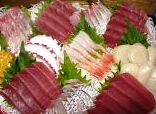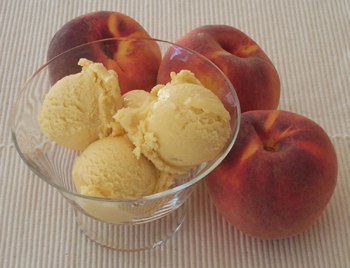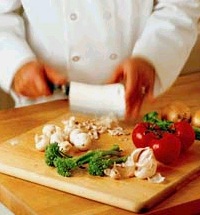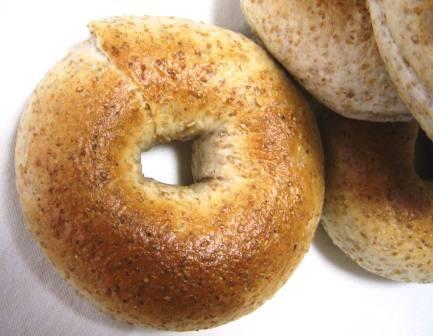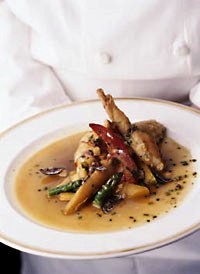
Despite a common pan-gallic chauvinism, French cooking is not a
monolith: it ranges from the olives and seafood of Provence to the
butter and roasts of Tours, from the simple food of the bistro to the
fanciful confections of the Tour d'Argent. However, it all shares
seriousness about food. Throughout the country, French cooking involves
a large number of techniques, some extremely complicated, that serve as
basics. Any cook will tell you that French food will not tolerate
shortcuts in regard to these fundamentals. Because mastery of sauces or
pastry doughs is the centre of the culinary arts, recipes themselves
remain classic and constant. In a way similar to Japanese cuisine, it is
expected that even the simplest preparation be undertaken in the most
careful manner, which means disregarding the amount of time involved.
This is one reason why French cooking has always seemed so daunting on
the other side of the Atlantic. Americans love nothing more than
combining innovation with time-saving; it is the particular genius of
the United States, and it couldn't be more at odds with the French
aesthetic.
Not only do basic cooking techniques require great skill, but they also
demand a deep understanding of the ingredients themselves. Just as the
vintner knows that the finest Bordeaux comes from the grapes grown on
that side of the hill and not this, so too the chef knows not only from
which region come the finest petits pois (small, young green peas), but
from which town -- the same goes for asparagus, and even cauliflower. If
there is something worth eating, and cooking, there is a best
representative of such.
Many foods are known by the town that made
them famous, such as Pessac for
strawberries, the peas of Saint-Germaine, Macau artichokes, the
Charollais steer, butter of Isigny.
The French and English adapted service à la russe, in which courses are
served separately, in the middle of the 19th century. A French meal
might begin with a hot hors d'oeuvre (or for luncheon, a cold hors
d'oeuvre) followed by soup, main course, salad, cheese, and finally
dessert.
The French operate with a strong sense that
there is an appropriate beverage for every food and occasion. Wine is
drunk with the meal, but rarely without food. An aperitif (a light aloholic beverage such as Lillet)
precedes the meal and a digestif (something more spirited -- say,
cognac) may follow. This close relationship between food and wine may,
in part, closely parallel the evolution of great cooking and great wine
making. It is probably not coincidental that some of the best cooking in
France happens in some of her finest wine-growing regions. In Burgundy,
Bordeaux, Provence, and Touraine, wine is as prevalent in the cooking
process as it is in the glass. Champagne as a beverage doesn't accompany
food gracefully, likewise, as a region it is not well known for its
food. One notable exception to this rule (and there are of course
others) is Normandy, who, from her fantastic butter, cream, cheese,
apples and the riches of the sea, has produced a marvelous local cuisine
without the help of wine. However, the local Calvados, an apple based
eau-de-vie, may also explain the phenomenon.
The French are predominantly Catholic and thus have no eating
prohibitions, though many dishes have a Lenten variation. Moreover, the
Gauls are not afraid to eat anything. Kidney, brain, sweetbreads, tripe,
blood sauces and sausages, sheep's foot, tongue, and intestines are all
common in French cooking and hold equal standing with the meat of lamb,
beef, pork, poultry, and game.
Quite the opposite of being exotic, these foods are at the heart of the
bourgeois menu, with seafood inevitably being the soul, and vegetables,
the flesh.


